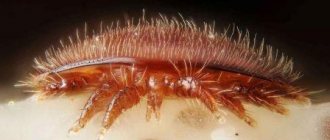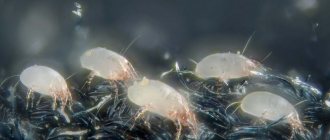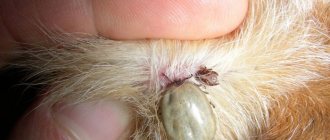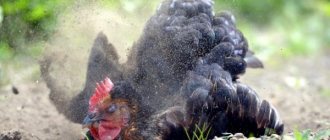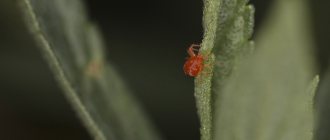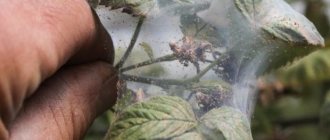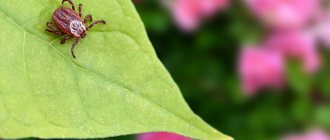Caring for and planting plants is sometimes very problematic. In particular, various harmful insects do not give rest. Strawberry mite is a common occurrence, especially when conditions are good for this pest. Due to the fact that it is dangerous for escapes. The mite infects all parts, causing the death of bushes and poor harvest. This pest needs to be fought.
Dear readers! For you, we have created communities on social networks in which useful articles and interesting ideas are published several times a day! Subscribe and receive useful content in a convenient format!
Description
Ticks (Phytonemus pallidus) are dangerous and small parasites, visible only through a magnifying glass, which makes them difficult to control. If there is a global defeat, there is a possibility of being left without a harvest both in the current and next season. This is motivated by the fact that mites damage flower buds throughout the season. Often the tick attacks individuals older than 3 years.
Types of ticks
Strawberry mite is a general name for a number of pest species.
There are 3 types of these harmful creatures.
Transparent tick (Polyphagotarsonemus latus) - found in moist soil, it becomes active around mid-March, when the temperature on the thermometer reaches +13°C. Spreading over the strawberry bushes, it takes all the juices from the leaves.
Common spiderweb (Tetranychus urticae) - this parasite prefers warm, dry leaves. It also becomes active in March-April. Active reproduction occurs at t =+12°C. The specificity of tick entomology is the formation of a web (hence its name).
Cyclamen mites (Phytonemus pallidus). This type of parasite is similar to the two described above, with the exception of a number of differences: the dimensions of the insect are much smaller. The female's back has no spots. They do not secrete cobwebs. The movement occurs passively - on leaves that have been torn off by the wind. Also, mite infestation occurs through transfer on clothing.
The food for the cyclamen and common spider parasites are substances from strawberry leaves and other crops.
Causes of defeat
Garden pests prefer warm, humid weather, when the thermometer rises to +19 - +25 degrees with a humidity of 80-90%. In such conditions, strawberry mites quickly develop and reproduce.
Maximum insect activity occurs at the end of July and beginning of August, when the soil becomes less wet.
How do strawberry mites appear on strawberries?
- The gardener purchases already infected planting material.
- Pests are carried on gardening tools.
- Ticks get onto strawberry plantings from clothes and shoes.
With the onset of cold weather, the males of these arthropods die, and the females prepare for winter by completely refusing food. They hide behind stipules at the base of bushes or inside unopened young leaves.
How to deal with strawberry mite?
You can fight ticks in various ways:
- using chemicals;
- using folk remedies;
- by growing plants that control harmful insects;
Drug treatment methods
An effective measure in the fight against garden parasites, in which there is a probability of getting rid of 90-95% of its numbers, is to mow the grass immediately after harvesting.
This procedure should not be put off for a long time, since the shoots need time to grow their crown before the onset of cold weather. After this, you need to spray the bushes with one of the preparations listed below.
Next, you need to spray the cleaned area 3 times, with an interval of 7 days, with biological pesticides “Fitoverm” or “Akarin”. Proportions – 20 ml/ bucket of water.
Also effective are “Fufanon” (30 ml / 10 liters of water), “Aktellik” (15 ml per 10 liters of water). Chemicals must be applied during breaks - the tick quickly adapts to the drugs.
How to get rid of it using folk remedies?
There are many folk remedies for pest control, let's look at some of them.
How to treat with onion peel tincture
In the spring, with the appearance of 1 leaf, at the stage of bud formation and 2 times after picking the berries, it is possible to defeat the mite with a tincture of onion peels.
The recipe for the product is as follows: 200 gr. dry substance should be poured with a bucket of water, left for 4-5 days, strain. Next, spray the strawberry bushes with infusion.
Decoction of tomato leaves
A decoction of tomato leaves works well against bream.
Preparation:
- 1 kg. Tomato tops are poured with 10 liters of water and left for several hours.
- Next, the infusion is boiled for three hours, filtered, diluted with water in a proportion of ½, and 40 grams are added. household soap
- After cooling, strawberry beds are processed with this mass.
Garlic broth
Garlic broth also works well - 0.5 liters per bush. To achieve the result, it is advisable to cover the treated seedlings with polyethylene film for 5-6 hours.
Attention! Spraying with poisons, such as Karbofos, is recommended only after picking the berries. During this procedure, you need to thoroughly wet the young leaves, since the mite mainly settles on them.
other methods
It is good to fight ticks by warming the ground. Why, after harvesting, you need to mow down all the leaves, after a few days the garden needs to be treated with fire, then water the strawberries heavily. Further care consists of manipulations such as fertilizing, weeding, and shelter for the winter.
Plants that repel ticks
Plants that help fight ticks.
Tansy
This plant is the most effective protector against ticks.
For many of us, this is just a roadside weed, but it has found its place in gardening and dacha affairs.
Perfect as an alternative to pesticides, fighting against fungus on the plant.
The use of tansy on the site is primarily a fight against ticks. The effect of tansy lies in its smell, which resembles camphor. This plant also repels other pests with its “aroma”. Tansy grows best in areas with clay soil.
Cat mint
Another “tick repeller” is Catnip (Catnip).
This plant is low, about 40 cm, with slightly spreading stems.
Catnip decorates the garden from mid-summer until September.
The strong smell repels ticks.
The flowers contain an essential substance – in particular nepetalactone. Ticks don't like it. In addition, this cat plant is unpretentious when growing.
Lavender
Only not mountainous, but narrow-leaved.
The specific smell repels ticks. Contains essential oil, the key components are ocimene, linalool, camphor.
They are not tolerated by ticks and mosquitoes.
Rosemary officinalis
This medicinal plant repels ticks well and has healing properties.
Pests cannot tolerate the aroma of this plant.
It is better to plant it in soil with a neutral pH, in a well-lit and heated place. It cannot winter on the site, as it does not tolerate low temperatures well.
Dalmatian chamomile
Another name is Pyrethrum.
It contains toxic substances peritrin and cynerin, which damage the muscles and nervous system of insects. Dalmatian chamomile blooms all summer, forming light yellow baskets. The plant feels comfortable in fertile soil and a sunny place.
Strawberry varieties resistant to mite
Wild berries with small fruits are usually resistant to the parasite, but can be its carrier.
The garden variety “Omskaya Rannyaya” is partially resistant to mites. Virtually unaffected by:
- "Torpedo";
- "Dawn";
- "Knight".
Varieties with a high percentage of glucose in the berries are not resistant to the pest.
In the fight against ticks, preventive measures are important:
- The seedlings do not tolerate unsanitary conditions and love ventilation and lighting.
- There is no need to plant strawberries in the shade or in areas where water stagnates.
- It is recommended to loosen the soil more often, hill up the bushes, and feed the bushes on time. Thus, optimal conditions are provided for the development and growth of plants, increasing resistance to pests, which include the mite that attacks strawberries.
Attention! Do not forget about crop rotation - a plant can be grown in its original place no earlier than after four years.
What is recommended before planting?
- Loosen the soil more often, hill up the bushes, and feed them in a timely manner.
- When using your seedlings, young bushes are completely immersed in hot water for 15 minutes, then rinsed in cold water and planted in the ground. This procedure must be carried out no later than August 15: before winter, the seedlings must take good roots and develop a developed bud.
- In the early stages of detecting the parasite, it is necessary to remove both the affected bushes and the neighboring ones.
You should not rely 100% on any one processing method. Sometimes high-quality chemicals drugs will not be able to defeat the pest completely and forever. All “medicines” have restrictions that must be strictly followed.
Do not think that spring treatment can rid you of ticks for the entire season. The effect of the drugs only restrains the population, but does not completely destroy it.
Perhaps the main mistake on the part of gardeners and summer residents is untimely care of the site. That is, we need to regularly pull out weeds, monitor the appearance of seedlings “eaten up” by the pest, and clean the beds.
Strawberry varieties resistant to mite
Many crops of domestic varieties that retain their best varietal properties are resistant to strawberry mite, for example:
- Viola;
- Kokinskaya dawn;
- Mommy - the strawberry variety is being tested, but no flaws have been found yet;
- Slavutich - there is only one drawback - strawberries contain little sugar.
The strawberry mite can become a real disaster, quickly destroying strawberry bushes and the gardener's hope for a good harvest. Here it is important to be vigilant and pay more attention to fruit-bearing crops. The more high-quality care the plants receive, the lower the owner’s risk of encountering this insidious pest.
Preventive measures
Prevention of pest infestation is very important, because in this case there will be no need to carry out measures to destroy ticks. In order to avoid the appearance of these harmful insects on the site, the following rules must be observed:
- plant beds with wild strawberries and strawberries in well-ventilated sunny areas without stagnant water;
- During the season, regularly loosen the soil and provide the necessary fertilizing;
- observe crop rotation, that is, change the location of the beds every 4 years;
- when purchasing new planting material, be sure to soak it in hot water;
- destroy suspicious bushes;
- After autumn pruning of leaves, do not leave them in the garden bed.
If you follow all the rules for growing strawberries, and if pests appear, you start fighting them in a timely manner, strawberries will always delight you with high yields.
Common mistakes when dealing with pests
Unsuccessful attempts to combat the strawberry mite quickly lead to a sad outcome: the plants are ruined, there is no harvest, and the insect has already moved on to neighboring crops. To avoid negative consequences, you need to avoid such mistakes:
- Carry out 1-2 treatments only in spring. It is impossible to kill a tick at once. Even if most of the adult individuals die, after 2-3 weeks new ones will appear, hatching from the laid eggs, and will continue to attack. Treatments must be systematic;
- do not care for the culture. If you do not loosen the soil, weed, or pick off dry, infected leaves, then the most favorable conditions for reproduction are created for insects;
- use chemicals more than once a week. The effect of chemistry is based on toxic compounds, so when there is an excess of harmful substances, the crop itself suffers.
In the fight against the enemy, a systematic approach is important, consisting of a set of measures: cleaning the beds, caring for strawberries and processing them, only then the tick can be easily defeated.
Step-by-step instructions for processing plants
In order for the results of processing strawberry beds to be positive, the gardener should follow some recommendations.
Did you know? Strawberries belong to the Rosaceae family, and when they bloom, their flowers emit a sweet scent that attracts insects.
How to properly treat a strawberry bed against ticks:
- To carry out organic and chemical treatment, choose a cool, preferably cloudy day with low air temperature (from +10°C to +20°C). Even under such weather conditions, it is advisable to carry out processing in the morning. If the procedure is carried out in the morning, the strawberry leaves will dry out before evening, and this is very important, since the crop is prone to fungal diseases, for which drops of moisture serve as an optimal breeding ground for spores.
- Before the procedure, the gardener must put on clothing that protects the body, legs and head. You should also protect your respiratory system by wearing a gauze bandage or a respirator before work. The eyes are protected from the effects of chemicals with transparent glasses that fit tightly to the head.
- The selected active drug is diluted with water, in accordance with the instructions attached to it, and poured into a pump sprayer. If there is such an opportunity, it is advisable to change the sprayer nozzle to another one with smaller holes. Spraying in the form of fog or fine dust would be optimal.
- Spraying is carried out slowly, so that the drug gets not only on the upper part of the leaf plate, but also under it. Particular attention should be paid to the center of strawberry rosettes, where the buds of young leaves are located. It is the young tender leaves that strawberry and spider mites feed on.
- 5 days after the treatment, it is advisable to inspect the plantation in order to identify live ticks. If insects are found, the treatment will have to be repeated. If this period occurs during the ripening of berries, chemical treatments must be postponed until after the harvest.
Important! Chemical treatments of plants should not be carried out at air temperatures above +25
°
C, since heat promotes rapid evaporation of the active substance from insecticides or acaricides.
Signs of infection
What does a strawberry mite look like? The problem is that it is almost impossible to see it. This is proven by his description:
- length - does not exceed 0.3 mm, width - up to 0.1 mm;
- body - whitish, almost transparent;
- over time, in adult individuals, the body color becomes pale green, brownish or yellowish, merging with the leaves and shoots.
To see it, you will need a magnifying glass with 8x magnification. And yet, you can find out about the pest invasion by withering strawberry bushes. Main signs of damage:
- slow or completely stopped growth of the bush;
- young leaves are deformed: they take on a wave-like shape, become covered with bumps, wrinkle and curl, resembling crumpled paper;
- covered with an unpleasant yellowish-oily coating on top and silvery on the bottom;
- turn yellow and soon dry out;
- the berries dry out before they have time to fully ripen;
- productivity declines sharply.
Appearing on strawberries, the strawberry mite causes serious damage to the current crop, and also destroys subsequent ones, since it does not allow flower buds to form. It is especially aggressive against plantations that are already 3-4 years old. In addition, a damaged plant loses its frost resistance, which increases the risk of not surviving the winter.
Remember
- Use chemicals alternately to kill ticks . Use the same chemical no more than twice per season. Over time, the pest gets used to it and does not react to the toxic base.
- Plant strawberries on the sunny side of the site . The plant develops poorly and bears fruit in the shade. The berries need a lot of sun for their flavor and sweetness.
- When the strawberries fade and the berries appear, thin out the bushes. To do this, cut out most of the leaves. The plant will give strength to form fruits. This procedure will allow air to circulate freely between the bushes, creating a ventilation effect, and will reduce the likelihood of strawberry mites appearing.
Recommendations
In order for chemicals and folk remedies to have an effect against the strawberry mite, it is necessary to take all kinds of agrotechnical measures.
You should know and follow the spraying rules:
- Chemicals should not be used during flowering and fruiting periods. If such a need arises to save the bushes, you will have to come to terms with the idea that the berries cannot be eaten after such treatment.
- When using chemicals, be sure to wear protective clothing, gloves, a respirator and goggles.
- Carry out the procedure on a dry, windless day: early in the morning, after the dew has disappeared; or late in the evening, when the sun stops shining.
- It is better to spray the solution using a spray bottle with a special nozzle that allows you to treat leaves on both sides.
- Use only freshly prepared solution.
- Spray the leaves on both sides, especially carefully treating the lower part.
- The most effective scheme: 3 times with an interval of 10 days to destroy both adults and eggs.
When spraying, experts recommend adding any of the plant moisturizers to the acaricide: Flipper or Hyperion. As practice shows, this increases the effectiveness of any drug and treatment in general.
If a strawberry mite is detected:
- if the bush is too severely deformed, all the leaves grow wavy, the berries are not set, there is no point in spending money and time on treatment - it would be more advisable to dig it up and burn it;
- inspect all the plants growing next to the strawberries;
- collect all damaged parts: yellowed and dried leaves and berries - burn them outside the site;
- dig up (loosen) a bed of strawberries;
- spray the bushes and spill the soil with the chosen product (if it is a chemical, follow exactly all the proportions specified in the instructions);
- sprinkle the ground with wood ash mixed with sawdust;
- feed the strawberries with complex fertilizer.
